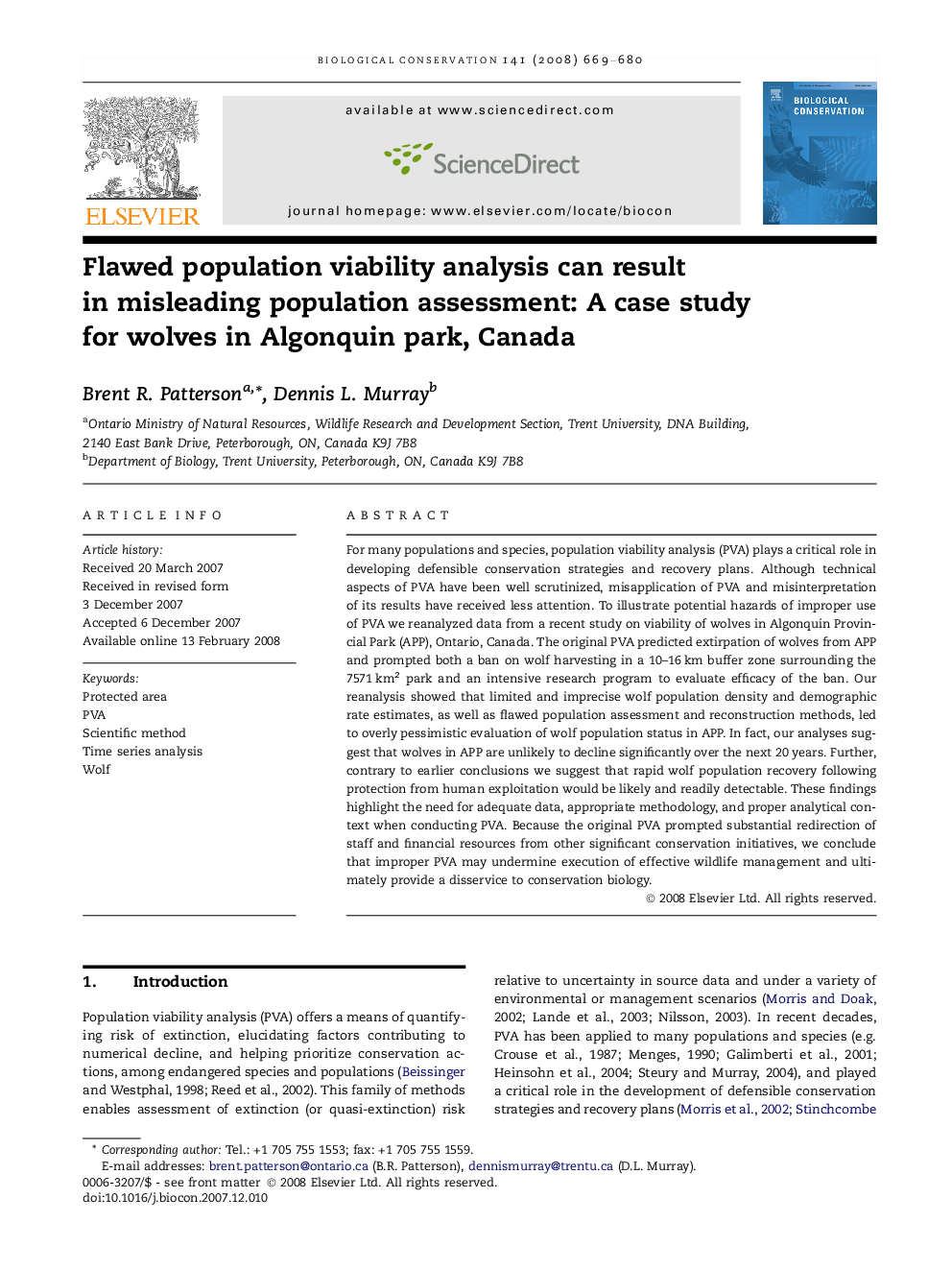| کد مقاله | کد نشریه | سال انتشار | مقاله انگلیسی | نسخه تمام متن |
|---|---|---|---|---|
| 4386726 | 1304576 | 2008 | 12 صفحه PDF | دانلود رایگان |

For many populations and species, population viability analysis (PVA) plays a critical role in developing defensible conservation strategies and recovery plans. Although technical aspects of PVA have been well scrutinized, misapplication of PVA and misinterpretation of its results have received less attention. To illustrate potential hazards of improper use of PVA we reanalyzed data from a recent study on viability of wolves in Algonquin Provincial Park (APP), Ontario, Canada. The original PVA predicted extirpation of wolves from APP and prompted both a ban on wolf harvesting in a 10–16 km buffer zone surrounding the 7571 km2 park and an intensive research program to evaluate efficacy of the ban. Our reanalysis showed that limited and imprecise wolf population density and demographic rate estimates, as well as flawed population assessment and reconstruction methods, led to overly pessimistic evaluation of wolf population status in APP. In fact, our analyses suggest that wolves in APP are unlikely to decline significantly over the next 20 years. Further, contrary to earlier conclusions we suggest that rapid wolf population recovery following protection from human exploitation would be likely and readily detectable. These findings highlight the need for adequate data, appropriate methodology, and proper analytical context when conducting PVA. Because the original PVA prompted substantial redirection of staff and financial resources from other significant conservation initiatives, we conclude that improper PVA may undermine execution of effective wildlife management and ultimately provide a disservice to conservation biology.
Journal: Biological Conservation - Volume 141, Issue 3, March 2008, Pages 669–680